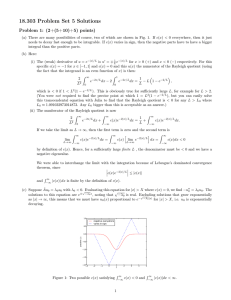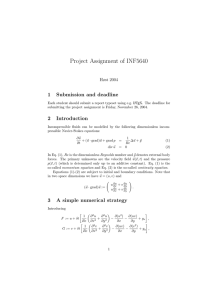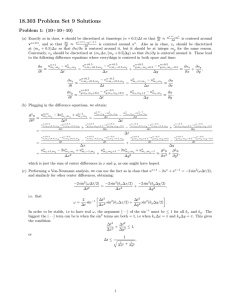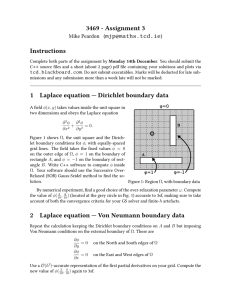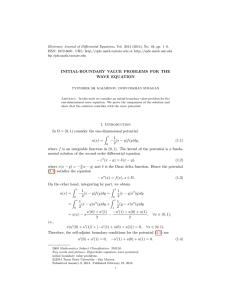18.303 Problem Set 9 Problem 1: Discretizing a 2d wave equation
advertisement
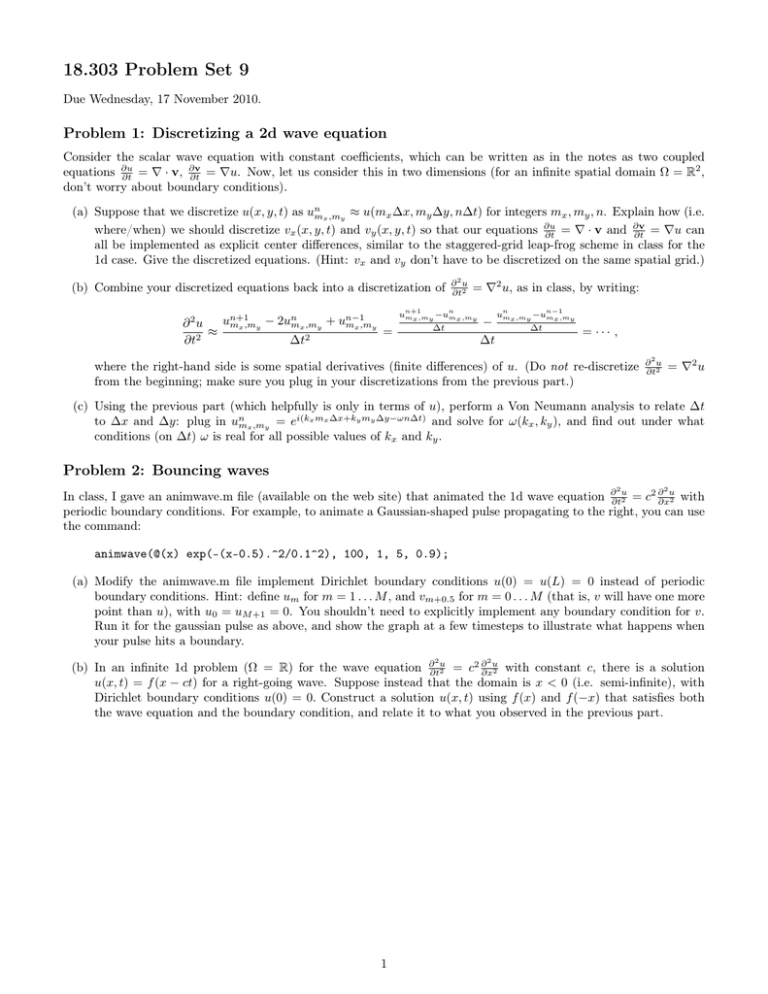
18.303 Problem Set 9 Due Wednesday, 17 November 2010. Problem 1: Discretizing a 2d wave equation Consider the scalar wave equation with constant coefficients, which can be written as in the notes as two coupled ∂v 2 equations ∂u ∂t = ∇ · v, ∂t = ∇u. Now, let us consider this in two dimensions (for an infinite spatial domain Ω = R , don’t worry about boundary conditions). (a) Suppose that we discretize u(x, y, t) as unmx ,my ≈ u(mx ∆x, my ∆y, n∆t) for integers mx , my , n. Explain how (i.e. ∂v where/when) we should discretize vx (x, y, t) and vy (x, y, t) so that our equations ∂u ∂t = ∇ · v and ∂t = ∇u can all be implemented as explicit center differences, similar to the staggered-grid leap-frog scheme in class for the 1d case. Give the discretized equations. (Hint: vx and vy don’t have to be discretized on the same spatial grid.) (b) Combine your discretized equations back into a discretization of n n−1 un+1 ∂2u mx ,my − 2umx ,my + umx ,my ≈ = ∂t2 ∆t2 ∂2u ∂t2 = ∇2 u, as in class, by writing: n un+1 mx ,my −umx ,my ∆t − ∆t n−1 un mx ,my −umx ,my ∆t = ··· , where the right-hand side is some spatial derivatives (finite differences) of u. (Do not re-discretize from the beginning; make sure you plug in your discretizations from the previous part.) ∂2u ∂t2 = ∇2 u (c) Using the previous part (which helpfully is only in terms of u), perform a Von Neumann analysis to relate ∆t to ∆x and ∆y: plug in unmx ,my = ei(kx mx ∆x+ky my ∆y−ωn∆t) and solve for ω(kx , ky ), and find out under what conditions (on ∆t) ω is real for all possible values of kx and ky . Problem 2: Bouncing waves 2 2 In class, I gave an animwave.m file (available on the web site) that animated the 1d wave equation ∂∂t2u = c2 ∂∂xu2 with periodic boundary conditions. For example, to animate a Gaussian-shaped pulse propagating to the right, you can use the command: animwave(@(x) exp(-(x-0.5).^2/0.1^2), 100, 1, 5, 0.9); (a) Modify the animwave.m file implement Dirichlet boundary conditions u(0) = u(L) = 0 instead of periodic boundary conditions. Hint: define um for m = 1 . . . M , and vm+0.5 for m = 0 . . . M (that is, v will have one more point than u), with u0 = uM +1 = 0. You shouldn’t need to explicitly implement any boundary condition for v. Run it for the gaussian pulse as above, and show the graph at a few timesteps to illustrate what happens when your pulse hits a boundary. 2 2 (b) In an infinite 1d problem (Ω = R) for the wave equation ∂∂t2u = c2 ∂∂xu2 with constant c, there is a solution u(x, t) = f (x − ct) for a right-going wave. Suppose instead that the domain is x < 0 (i.e. semi-infinite), with Dirichlet boundary conditions u(0) = 0. Construct a solution u(x, t) using f (x) and f (−x) that satisfies both the wave equation and the boundary condition, and relate it to what you observed in the previous part. 1
